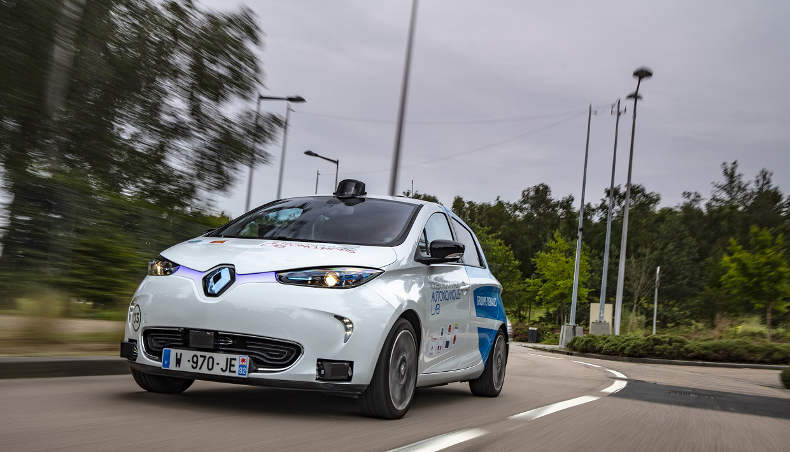
Between now and the end of 2018, members of the public will be able to step inside autonomous ZOE vehicles placed on the road as part of Rouen Normandy Autonomous Lab. Groupe Renault is a partner in this ride-hailing shared-mobility trial, which it sees as the perfect opportunity to organize user tests on the interior layout of its future robot-vehicles.
Is the conventional cabin layout (two or three rows of seats all facing forwards) still relevant in cars that are autonomous or even driverless? What’s the best way to reorganize the cabin when the vehicle becomes an object of shared mobility, no longer designed around the driver but focused on the passengers? How can we bring users to accept the absence of a driver and the presence of people they may not necessarily know?
At Groupe Renault, the researchers and ethnologists involved in the development of autonomous vehicles have been working on these questions for some time. Without forgetting to involve customers in their studies. Their work includes preliminary studies as well as real-life field tests, as in the case of Rouen Normandy Autonomous Lab. Groupe Renault is a partner* in this initiative, which will be open to the public before the end of 2018.
Safety as a priority
This trial in shared mobility ride-hailing involves the use of autonomous vehicles on open roads – a first in Europe. It is based on fully autonomous, electric Renault ZOE vehicles, inside which passengers must first and foremost feel safe. The needs expressed most strongly by the people interviewed include a visible and accessible emergency stop button, surveillance cameras and a system enabling remote dialog with a supervisor (even though a supervisor will be present on board for these trials).

However, we need to go further if people are to really “accept” the idea of a car without a driver. For this reason, these robot-vehicle prototypes are equipped with an information screen that can be seen by all the passengers. This screen clearly shows what the vehicle can “see” and what it is going to do. It also displays periodic reminders of the main “house rules”, such as the ban on smoking or eating on board.
Pursue privacy or encourage contact?
Other important questions concern user perceptions of the interior and thus the cabin layout. One of the ZOE vehicles used in the trial features a new cabin layout: the front passenger seat no longer faces the road but has been turned towards the rear to encourage people to talk to other service users. Users/testers will tell us whether they prefer this open approach for shared journeys, or whether they’re looking for privacy, e.g. so that they can continue a telephone conversation or listen to music without bothering their neighbor.

The boot will be another of the aspects studied. Should we remove it to increase interior space? Or should we keep it, even though it could detract from smooth service operation, given the time required for loading/unloading, or even cause stress owing to the potential risk of theft?
All these questions illustrate the fundamental role played by field studies in the development of the robot-vehicles of the future. As we have already said, the aim of Groupe Renault is to launch commercial services of this type – in cooperation with the Alliance – by the end of its strategic plan Drive The Future 2017-2022.
_______________________________________________________________
**With the Métropole Rouen Normandie authority, the Normandy region, the Transdev group, the Caisse des Dépôts group and the Matmut group.
The SYMBIOZ and EZ-GO concepts go even further
Engineering studies and customer surveys are also helping us to look beyond 2022. The two most recent concept cars presented by Renault express the brand’s vision of the future in the longer term. They both explore the idea of a cabin redesigned for autonomous driving, each in their own way.

2017 – Renault SYMBIOZ
SYMBIOZ Concept (2017 Frankfurt Motor Show) placed the emphasis on modular design. The aim is for the driver and passengers to be able to take advantage of the periods where driving is delegated to one of the autonomous modes. For example, the steering column and wheel are retractable, the pedal assembly and dashboard move back by around 15 cm and the front seats pivot by 180°, etc. As a result, the driver and front passenger can face the rear passengers as they would in a lounge, sitting round a small table that can be set up between the seats.

2018 – EZ-GO
The EZ-GO concept (2018 Geneva Motor Show) is a driverless passenger transport vehicle. The open interior features sofa type seats in an arc layout, inviting contact and discussion.
These two concepts show how the interior of autonomous driverless vehicles by Renault might look between now and 2030.
